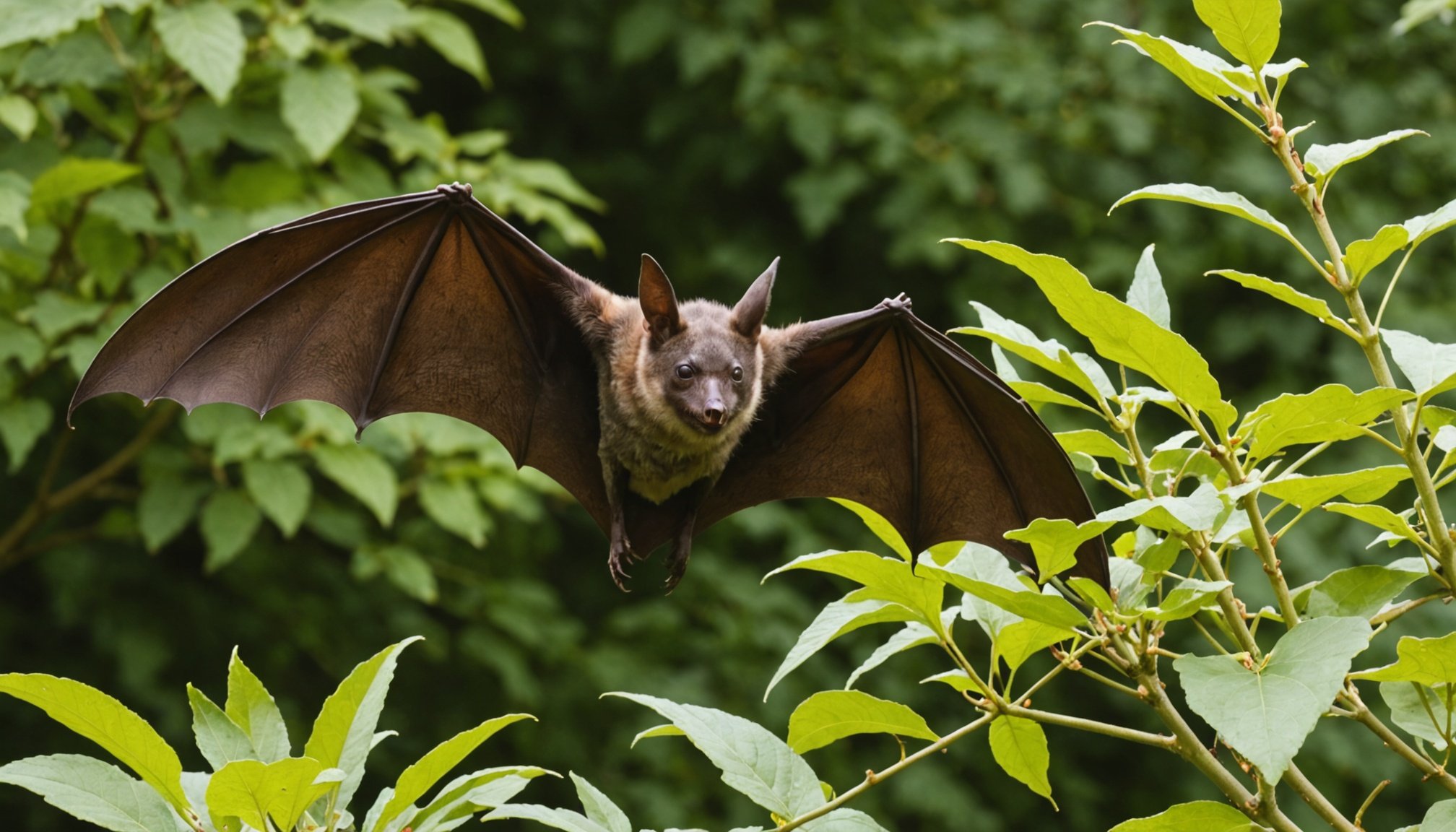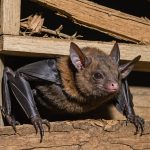Understanding Bat Ecology and Habitats
Bats are an essential part of the ecosystem, playing vital roles in pollination and controlling insect populations. In the UK, there are 18 known bat species, each with specific habitat requirements that ensure their survival and ecological contribution. Understanding these requirements is paramount for conservation efforts, as habitat loss is a significant threat to bat ecology.
Habitat requirements for bats vary but generally include roosting sites, foraging areas, and corridors for movement. Roosting sites are crucial and can range from mature trees to buildings and caves. The availability of suitable roosts affects bat populations significantly. Foraging areas, where bats hunt for insects, need to be rich in biodiversity. Riparian zones and woodlands are often ideal.
A voir aussi : Must-have plants for uk gardens: key species to support native butterfly habitats
The relationship between bat habitats and rural land use is complex. Land use practices such as agriculture and urban development can drastically alter available habitats. Maintaining hedgerows, preserving old trees, and creating new wetlands are practices that support bat-friendly habitats.
To ensure the thriving of bat populations, it is essential for conservation efforts to align with sustainable land use practices. Balancing ecological needs with human activities can enhance biodiversity and uphold the integrity of bat habitats.
Sujet a lire : Unraveling the uk”s game plan: tracking and preventing wildlife disease transmission from pets to nature
Habitat Enhancement Techniques
Enhancing bat habitats begins with implementing natural landscape features that support their unique needs. Incorporating native vegetation is crucial, as it sustains a bat-friendly ecosystem. Native plants provide essential food resources and shelter, which encourages biodiversity and helps maintain ecological balance. By mimicking the natural environment, these plants serve as a cornerstone for sustaining bat populations.
Another key aspect of promoting bat habitats is creating water sources. Bats, like many other wildlife, require water for survival. Artificially adding ponds or small water troughs can dramatically improve the habitat’s attractiveness to bats. These water features not only provide hydration but also attract insects, offering bats ample foraging opportunities.
Edge habitats, where different ecosystems meet, are particularly beneficial for bats, as they often support a higher abundance of biodiversity. Creating borders, such as hedgerows or transitional vegetative zones, can offer excellent foraging sites. These areas tend to have varied structural complexity, which is favoured by diverse bat species.
To optimise these features, regular management and maintenance are required. Monitoring changes in vegetation and adjusting water levels or replenishing plants can ensure the habitat remains conducive to supporting thriving bat populations over time. By focussing on these techniques, we can encourage not only the survival but the flourishing of these important nocturnal creatures.
Providing Roosting Sites
Ensuring suitable roosting sites for bats is crucial for their conservation. One effective method is by building bat boxes, designed to mimic natural roosting sites. These artificial habitats should be placed at least 4 metres high on buildings or trees, ideally facing south-east to provide warmth. The entrance should be unobstructed and kept away from artificial lights to avoid disturbance.
Maintaining existing natural roosting environments like old buildings, caves, and hollow trees is equally important. These structures provide essential shelter, so preservation efforts should prioritise keeping these habitats intact. Avoid sealing off entry points in old buildings and ensure that renovations consider bats’ needs.
In agricultural settings, implementing bat-friendly structures can play a significant role in conservation. By leaving hedgerows intact and maintaining ponds, farmers can create environments conducive to bat habitation. Further, integrating bat boxes along field edges can help bats thrive, promoting biodiversity.
To summarise, a combination of responsible building, thoughtful placement of artificial roosting, and the preservation of existing structures fosters a supportive environment for bats. These efforts not only aid in population stability but also enhance ecological health by encouraging natural insect control, which benefits crops and reduces the need for pesticides.
Enhancing Food Sources
Cultivating robust food sources for foraging bats requires a nuanced understanding of insect populations and their pivotal role in biodiversity support. Identifying strategies to bolster insect diversity is crucial. Enhancing habitat features, like wildflower strips and hedgerows, can attract and sustain insects. Such features not only increase the prey base for bats but also enrich biodiversity as a whole.
A look into agricultural practices reveals their significant influence on the food web. Fields managed with varied crop rotations and organic farming techniques contribute to a healthy balance. These practices mitigate habitat loss, often resulting from intensive agriculture, thus supporting a diverse range of insect species. Insect biodiversity is integral to maintaining food sources for predatory species like bats.
Adopting sustainable pest management techniques encourages beneficial insect populations while controlling pests. Methods such as introducing natural predators or using environmentally friendly pesticides help maintain insect balance. These practices not only support agricultural productivity but also ensure the preservation of food sources within the ecosystem.
Understanding these dynamics can significantly benefit the natural habitats of bats, ensuring that they continue to thrive alongside human agricultural endeavours. Encouraging biodiversity through thoughtful, sustainable actions fortifies the ecosystem for all its intricate inhabitants.
Mitigation Measures Against Threats
Bats are often overlooked, yet they play a crucial role in maintaining ecosystems. Despite their importance, various factors threaten these creatures, especially in rural areas. Among the key threats to bats are habitat loss, pesticide use, and climate change. Identifying these threats is the first step towards effective conservation.
To combat these threats, conservation strategies must be tailored to mitigate their specific impacts. Land development projects, for instance, can be aligned with bat conservation goals by preserving natural landscapes and ensuring that construction does not disrupt their habitats. Creating buffer zones and maintaining corridors for bat movement allows them to thrive despite human encroachment.
Community involvement plays a pivotal role in successful conservation efforts. Raising awareness about the importance of bats and their ecological contributions can foster community support. Encouraging villagers to participate in monitoring and maintaining bat-friendly ecosystems enhances the sustainability of these initiatives. Educational programs and workshops can further promote understanding and support for bat conservation.
In conclusion, while the threats to bat populations are significant, strategic mitigation strategies and active community involvement can ensure the survival and prosperity of bat populations in rural areas, balancing ecological needs with human development.
Case Studies and Expert Insights
Implementing effective bat conservation strategies in rural UK has shown remarkable results, as observed in various success stories. In one such case, collaboration between local farmers and conservationists led to the preservation of essential bat habitats. This joint effort not only protected bat populations but also promoted agricultural biodiversity.
Insights from Wildlife Experts
Wildlife experts emphasise the importance of collaborative conservation initiatives. These partnerships can be vital in enhancing understanding and sharing resources. According to experts, fostering relationships between different stakeholders, like government bodies, NGOs, and locals, ensures a more unified approach. This collective effort often guarantees that resources are used more efficiently, benefiting both wildlife and human communities alike.
Community-driven habitat restoration projects also serve as exemplary practices. Engaging communities in such projects leads to better conservation outcomes. Through involvement, locals gain a deeper appreciation and understanding of bats, further pledging their support. Sharing ownership of the process results in sustainable conservation, demonstrating that inclusiveness is crucial.
Lessons Learned
Key lessons from these projects include the need for transparent communication, continuous education, and community involvement. Apart from strengthening ties within the community, these practices lay a strong foundation for successful, long-term conservation efforts. As illustrated in these cases, empowering locals with the knowledge and skills to implement best practices significantly boosts project success.
Resources and Community Initiatives
In the world of bat conservation, a plethora of valuable resources and community initiatives are driving positive change. These projects not only protect bats but empower individuals through knowledge and further education.
A variety of inspiring community-led projects focus on promoting bat-friendly practices. These initiatives are often spearheaded by local groups dedicated to conservation. They provide resources such as guidance on creating bat habitats or organizing nighttime excursions to observe bats in their natural environments. Community volunteers frequently collaborate with landowners and farmers to incorporate bat support strategies, ensuring that agricultural practices align with conservation efforts.
Several organizations are pivotal in offering resources for bat conservation. These institutions provide comprehensive educational materials designed to inform landowners and farmers about the importance of bats in local ecosystems. Emphasizing effective bat-friendly practices, these resources allow individuals to make informed decisions about land management.
One of the core goals of these initiatives is to foster a sense of community involvement and ownership over bat conservation efforts. By participating in these efforts, individuals not only gain access to crucial resources but also have the opportunity to contribute to a larger movement aimed at ensuring the well-being of bats and the broader ecosystem.










